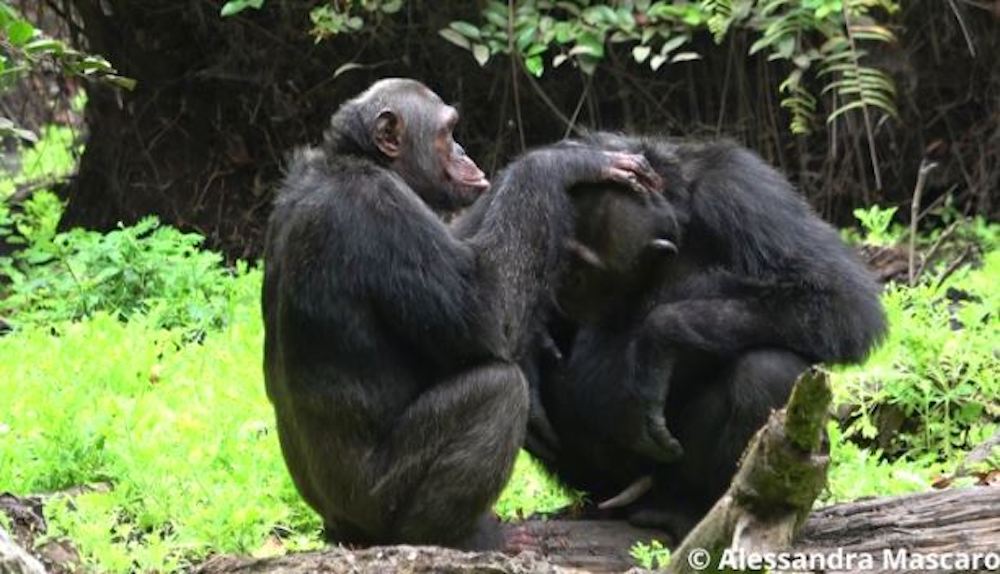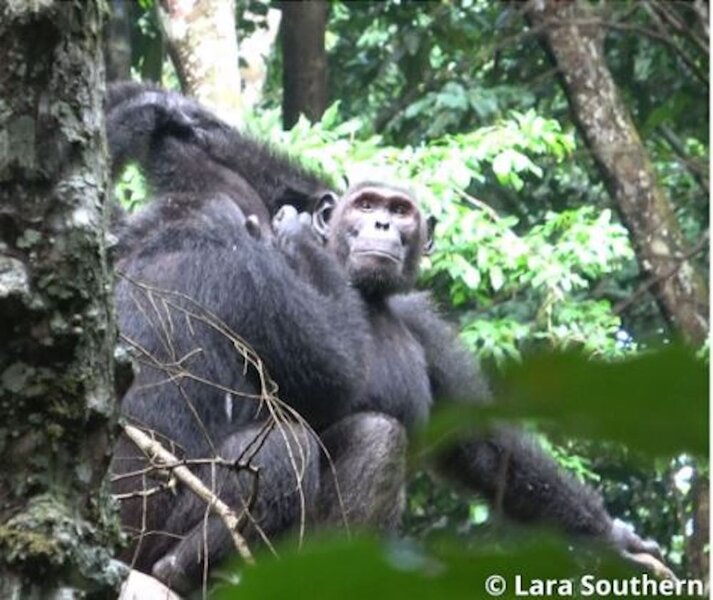Create a free profile to get unlimited access to exclusive videos, sweepstakes, and more!
Chimps have invented medicine, using crushed insects to treat wounds
And they didn't even have to pay a copay.

Chimpanzees may have entered the age of medicine. In 2019, scientists working with the Ozouga Chimpanzee Project observed a mother chimpanzee named Suzee inspecting a wound on the foot of her son. Then she did something unusual. Suzee snatched an insect out of the air, moved it to her mouth, then applied it to the wound.
Lara Southern, a scientist from Ozouga and the University of Osnabrück Institute of Cognitive Science and Comparative BioCognition, was part of the team who observed a population of chimpanzees over the next 15 months. During that time, they witnessed 19 instances in which an individual captured an insect and applied it to a wound on their own body, and a further three instances in which they applied an insect to a wound on another individual. These behaviors suggest both that chimpanzees have some level of medicative behavior as well as a level of altruism. The research results have been published in the journal Current Biology.
“Our first observation was actually one of the rarer events from across the whole study period,” Southern told SYFY WIRE. “We had a mother applying the insect to her son. We didn’t see it happening between two individuals again for another year.”
More commonly, the team observed adult males capturing insects and applying them to their own wounds. At first, scientists thought it might be a behavior which is more common among males, but that turned out to be a result of selection bias. Adult males are simply more likely to be wounded, as a result of their comparatively aggressive activities, so it stood to reason they would also be more likely to utilize this treatment.
Through continued observation, they did eventually observe three additional instances of female chimpanzees tending to the wounds of others, as well as some activity from younger individuals.
“We’re looking into the topic of social learning. We have a lot of juveniles who are very present. They do this behavior called peering, which is where they get really close with their face and they’re really inquisitive about what’s going on,” Southern said.
At present, it’s unclear exactly which type of insect is being used for wound treatment or what, if any, positive effects they might have on healing. Because these are behaviors being observed among chimpanzees in the wild, gathering more concrete data is difficult, but scientists are working on answering some of those questions.
Because of the way the insects are caught and handled, scientists believe they are some form of flying insect. Chimpanzees were seen snatching them out of the air before placing them into the mouth.
“We think it’s used for immobilization to prevent the insect from flying away,” Southern said. “They’re also very dark in color and small, we’re thinking something like a fly.”
Figuring out precisely what type of insect chimpanzees are using might prove difficult because there isn’t much material left once they’re finished. The whole process involves moving the insect back and forth between the mouth and the wound multiple times. It’s thought this might help in breaking the insect up and spreading whatever beneficial properties they have over a larger area.
Future research will include a comparative study between individuals who use the insect treatment and those who don’t, in hopes of determining what level of impact it has on wound healing.
“We think maybe it has a numbing quality or might resemble the way humans, when we’re little, will put saliva on a wound and that kind of helps it feel better. We don’t know if there’s something in terms of actual healing or just kind of a comfort behavior,” Southern said.
Scientists are also interested in mapping out the social relationships involved, which individuals are receiving treatment, and which individuals are providing it. What’s clear at this point is chimpanzees have complex social relationships and act in ways which benefit not just themselves but also the larger group, even when members of the group aren’t directly related.
They’re also providing a reminder about the best parts of humanity, and the best parts of the world, one smooshed bug at a time.



























